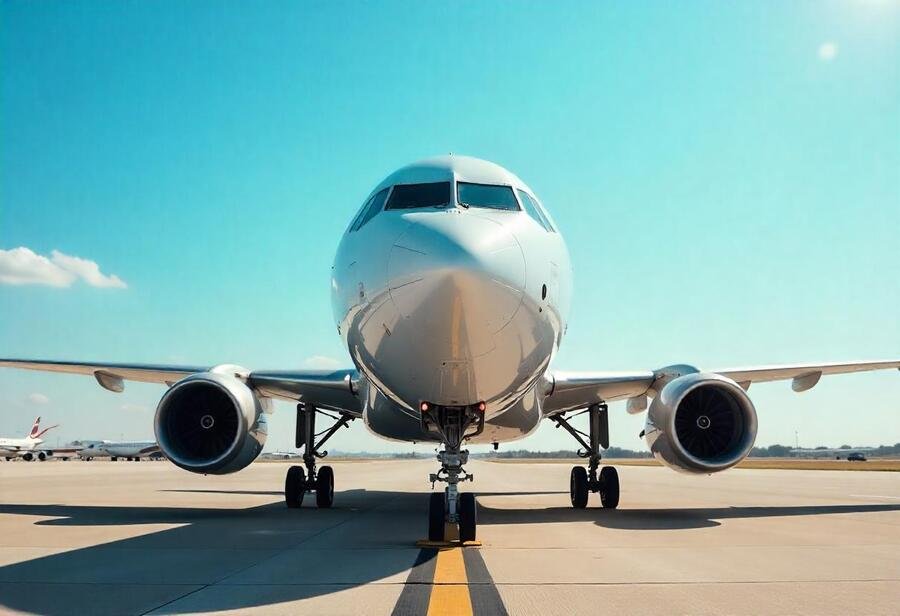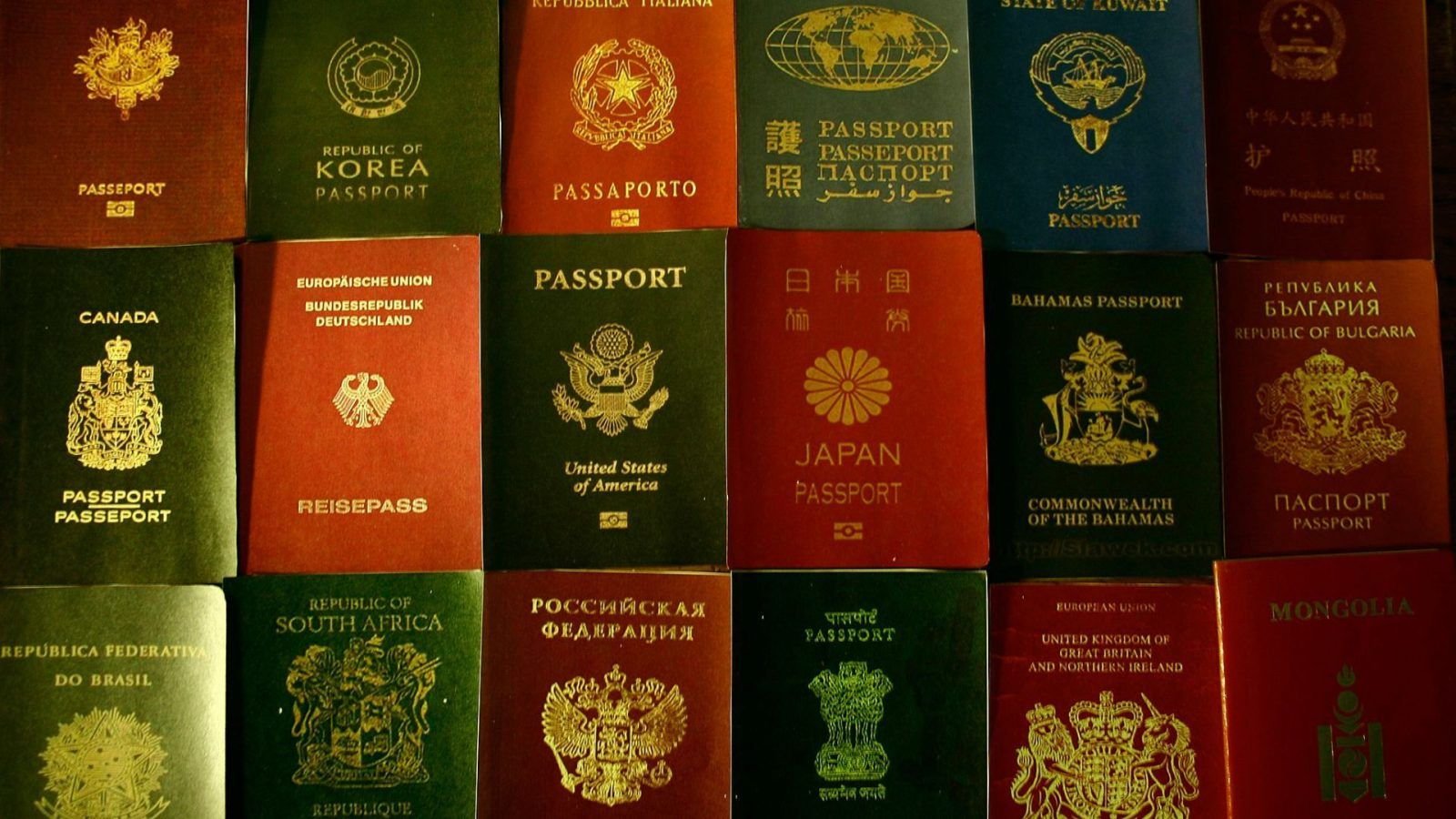Asia Travel Pulse
China Endures Direct Hit As Typhoon Wipha Submerges The Philippines And Forces Massive Shutdowns Across Asia

Monday, July 21, 2025
China and the Philippines are facing widespread devastation after Typhoon Wipha tore through the region, bringing torrential rains, violent winds, and massive flooding that have crippled transportation and forced tens of thousands from their homes. As the storm made landfall in China’s Guangdong province following days of intensified monsoon rains in the Philippines, flights were grounded, roads submerged, and entire communities displaced. The severe impact has paralyzed regional travel and triggered emergency response operations in both nations, marking one of the most destructive weather events in recent months.
Typhoon Wipha Makes Landfall in Southern China, Disrupts Travel and Forces Mass Evacuations Across the Region
Typhoon Wipha made landfall on the southern coast of China in Taishan, Guangdong province, on Sunday evening, triggering widespread disruptions across Hong Kong, Macau, southern China, and the Philippines. The storm affected regional air travel, public transportation, and residential areas, with authorities responding by issuing high-level weather alerts and initiating large-scale emergency procedures.
At approximately 5:55 p.m. local time on Sunday, Typhoon Wipha reached the coastline in Taishan. The storm brought strong winds and heavy rainfall. According to official weather data, wind speeds reached up to thirty meters per second during the storm’s peak. Shortly after landfall, the typhoon weakened into a severe tropical storm, but continued to cause damage across the region.
In the hours leading up to its landfall, Wipha had already impacted Hong Kong with severe weather conditions. Heavy rain and high winds affected much of the city, particularly northern districts near the mainland. The Hong Kong Observatory issued warnings for additional rain and strong gusts, noting that the weather system would likely continue to affect the area for several more hours.
In North Point, a district along Hong Kong’s northern shoreline, intense winds caused large sections of construction scaffolding to collapse from a residential building. The debris fell onto adjacent roads, blocking lanes and requiring emergency response teams to clear the affected areas.
Operations at Hong Kong International Airport experienced extensive delays and cancellations as a result of the storm. Around five hundred flights were cancelled, while approximately four hundred others were rescheduled for later departures or arrivals. Nearly eighty thousand travelers were affected throughout the day. Airlines operating in and out of Hong Kong responded by waiving ticket change fees and initiating rebooking procedures for impacted passengers.
Cathay Pacific, a major international carrier based in Hong Kong, suspended all flights scheduled between 5 a.m. and 6 p.m. on Sunday. This measure was taken to ensure safety as the storm passed through the region. In addition, most forms of public transportation were suspended, including ferry services, due to rough seas and safety concerns.
On the mainland, authorities in Guangdong and Hainan provinces issued high alerts as Wipha moved inland. Several major cities across southern China, including Shenzhen, Zhuhai, and Macao, experienced widespread flight cancellations or delays. Airlines and airport operators announced the suspension of all daytime flights on Sunday in response to the severe weather conditions. Emergency teams were placed on standby to address potential flooding, fallen debris, and infrastructure damage.
Wipha’s influence extended beyond China and Hong Kong. In the Philippines, the typhoon intensified the southwest monsoon, resulting in several days of persistent rainfall. According to the country’s disaster management authorities, two people were reported missing as a result of flooding and related incidents.
More than three hundred seventy thousand individuals in the Philippines were affected by the prolonged adverse weather conditions. Among them, over forty-three thousand were displaced from their homes and relocated to temporary shelters or the homes of relatives. Floodwaters inundated low-lying neighborhoods, while landslides were reported in hilly and mountainous areas.
Rescue and relief operations were activated in affected regions, focusing on evacuation, shelter, food distribution, and medical assistance. Emergency services remained on alert for further developments, particularly in regions at risk of additional landslides or river overflows.
Across all affected territories, local meteorological agencies continued to monitor the progress of Wipha. Despite weakening after landfall, the storm remained a threat due to sustained rainfall and wind gusts. Additional flooding risks and transport disruptions were anticipated, especially in areas with already saturated ground or unstable terrain.
In the aftermath of the storm’s landfall, authorities urged residents in high-risk zones to stay indoors, follow emergency advisories, and avoid non-essential travel. Coastal defenses and drainage systems were placed under close observation, and repair teams were dispatched to affected sites to restore blocked roads and damaged infrastructure.
China and the Philippines are reeling from Typhoon Wipha’s destructive path, which halted travel, flooded cities, and displaced tens of thousands across both nations. The storm’s impact has triggered a regional emergency with mass flight cancellations and widespread infrastructure damage.
Typhoon Wipha marked one of the more severe tropical systems to affect the region in 2025, highlighting the need for ongoing preparedness across East and Southeast Asia. The storm’s effects were felt simultaneously in air transport, urban infrastructure, and humanitarian safety, requiring coordination across aviation, government, and emergency response sectors.
Asia Travel Pulse
Passport Power Of Asian Nations Soars As Singapore Tops Henley Index

The Henley Passport Index 2025 once again ranks Singapore as the most powerful passport, giving it visa-free access to 193 destinations. The recent report highlights the rising passport power of Asian nations, as Japan and South Korea tie for second place with visa-free access to 190 destinations.
Henley Passport Index, updated monthly, is powered by exclusive Timatic data from the International Air Transport Association (IATA). The rankings are based on the number of destinations various passport holders from across the world can enter without a prior visa.
Plan your layover more effectively with our guide to things to do at Singapore Airport.
Passport power of Asian nations on the rise
Which country has the world’s most powerful passport?
The @HenleyPartners Passport Index, based on Timatic data from IATA, ranks the world’s passports according to the number of destinations their holders can access without a prior visa. pic.twitter.com/osz0xEcrxF
— IATA (@IATA) July 22, 2025
The ten most powerful passports in the world:
- Singapore: Visa-free access to 193 destinations.
- Japan, South Korea: Visa-free access to 190 destinations.
- Denmark, Finland, Ireland, Spain, Germany, France, and Italy: Visa-free access to 189 destinations.
- Austria, Belgium, Luxembourg, Netherlands, Norway, Portugal, and Sweden: Visa-free access to 189 destinations.
- Greece, Switzerland, and New Zealand: Visa-free access to 187 destinations.
- The UK: Visa-free access to 186 destinations.
- Australia, Czechia, Malta, Hungary, and Poland: Visa-free access to 185 destinations.
- Canada, Estonia, and the United Arab Emirates: Visa-free access to 184 destinations.
- Croatia, Latvia, Slovakia, and Slovenia: Visa-free access to 183 destinations.
- Iceland, Lithuania, and the United States: Visa-free access to 182 destinations.
How countries fared
According to the Henley Passport Index 2025, the UK, currently in sixth place with access to 186 destinations, dropped one place in the rankings compared to January, when the rankings were last updated. Additionally, the United States fell a spot, with visa-free access to 181 destinations.
Several Asian countries have made significant jumps over time, including India, which has climbed a staggering eight places from 85th to 77th place in a short span of six months. With two more destinations added to the tally, Indian passport holders can now travel to 59 destinations without having to apply for a visa. Afghanistan remains at the bottom, with access to only 25 destinations that require a prior visa.
(Feature image credit: Baigal Byamba, CC BY 2.0, via Wikimedia Commons)
Related | What To Do If You Lose Your Passport Abroad: A Step-By-Step Guide
Note:
The information in this article is accurate as of the date of publication.
Written By
Asia Travel Pulse
Malaysia Celebrates a Remarkable Rise in International Tourist Arrivals as Travel Recovery Gains Momentum and Strategic Policies Drive Growth Across Asia

Wednesday, July 23, 2025
Malaysia’s Tourism Soars with 17 Million Visitors in Early 2025
In the first five months of 2025, Malaysia witnessed a notable resurgence in international tourism, welcoming close to 17 million foreign travelers. This marks a 20.4% increase compared to the same period in 2024, reflecting the strong impact of government-driven policies aimed at revitalizing the country’s tourism sector.
This surge highlights a clear recovery trend for the nation’s tourism industry, which had faced several years of downturn due to global disruptions. With renewed momentum, Malaysia is positioning itself once again as a vibrant and accessible destination for global travelers.
Neighbouring Countries Play a Central Role in Visitor Growth
A significant proportion of these international visitors hailed from nearby nations, with Singapore emerging as the leading source, contributing 8.34 million tourists from January to May. This alone represents almost half of all international arrivals during that period.
Other neighboring countries also made considerable contributions:
- Indonesia with 1.82 million visitors
- China with 1.81 million visitors
- Thailand with 1.06 million visitors
These figures, formally released on July 21, underscore the importance of regional connectivity, ease of access, and bilateral travel agreements that have significantly boosted cross-border movement. The cultural closeness and convenient travel arrangements between Malaysia and these nations continue to play a key role in sustaining tourism traffic.
Long-Haul Travel on the Rise
While regional markets remain essential, long-distance tourism to Malaysia has also shown encouraging growth. Visitor numbers from Australia rose by 16.6%, while the United Kingdom experienced an 8.7% increase in arrivals compared to the same five-month period in 2024.
These rising numbers from distant markets indicate that Malaysia’s appeal is widening globally. Strategic decisions like relaxed visa rules and increased diplomatic efforts have made it easier for travelers from afar to consider Malaysia as a compelling option for leisure and cultural experiences.
Strategic Government Efforts Fuel the Surge
The remarkable rebound in visitor numbers has not occurred by chance. It has been the result of several targeted policies and development initiatives introduced by the government. Among the most influential measures are:
- Visa liberalisation, streamlining entry procedures for tourists
- Incentives and support for local tourism operators, fostering innovation and capacity
- Collaborative agreements with nearby countries, promoting border-friendly travel
- Major investments in infrastructure, especially in hospitality, airports, and transport networks
These well-coordinated efforts are creating a more inviting and efficient environment for tourists, regardless of where they come from. The sharp rise in arrivals is being recognized as a direct outcome of this strategic, multi-pronged approach.
Learning from 2024 and Looking Ahead to 2026
Despite the strong performance so far in 2025, the previous year had fallen short of expectations. Malaysia had originally aimed to attract 27.3 million visitors in 2024, but ended the year with just over 25 million.
This shortfall served as a wake-up call, leading to renewed efforts and adjustments in tourism strategies. Now, Malaysia has set an ambitious goal of reaching 47 million international arrivals by 2026. To achieve this, the country is turning its attention to diverse global markets, with a focus on:
- Central Asia
- The Middle East
- Southeast Asia
- Europe
- Oceania
This forward-thinking plan reflects Malaysia’s broader vision to establish itself as a key international travel hub, with deeper integration into the global tourism network.
A Global Example for Sustainable Tourism Recovery
Malaysia’s current trajectory in tourism recovery is being closely watched by other nations. Its example may influence international travel policies and inspire a wave of similar reforms elsewhere. The success demonstrates how data-driven planning, regional diplomacy, and infrastructure readiness can transform a country’s tourism outlook.
Possible global impacts include:
- A greater push for data-informed policy-making in the tourism sector
- Expanded visa-free entry programs in other countries
- Increased development of regional airline routes
- Stronger cross-border trade and tourism partnerships
- A guiding model for emerging travel destinations worldwide
By embracing innovation and strategic alliances, Malaysia has proven that a sustainable and dynamic tourism revival is possible.
Benefits for Global Travelers
These developments bring real-world advantages to international tourists. As Malaysia becomes more connected and competitive, travelers can expect:
- A wider selection of flights and travel routes
- Lower travel expenses driven by healthy competition and demand
- Improved facilities and services, including upgraded airports, hotels, and transport
- Greater opportunities for cultural exchange, through festivals, exhibitions, and events
- Attractive travel packages made possible through regional collaborations and promotional efforts
In practical terms, this means a more convenient, affordable, and enriching travel experience for anyone choosing to explore Malaysia in the coming years.
Southeast Asia’s Evolving Tourism Powerhouse
This rapid resurgence positions Malaysia as a rising tourism leader in Southeast Asia. As global tourism trends continue to evolve, the country’s achievements so far provide a blueprint for regional neighbors seeking their own path to recovery.
What makes Malaysia’s growth story particularly compelling is the strategic depth behind it. It’s not merely about increasing tourist numbers—it’s about transforming the tourism ecosystem to be more resilient, globally relevant, and economically beneficial.
As Malaysia continues working toward its 2026 objectives, it does more than pursue targets—it sets a vision for how tourism can be reimagined in the modern era. The country’s journey offers a lesson in determination, adaptive planning, and the power of regional cooperation to drive sustainable success in the global travel space.
In conclusion, the sharp rise in international visitors to Malaysia during early 2025 is more than a temporary rebound—it is a sign of long-term revival backed by thoughtful policy, regional unity, and global ambition. With its sights set high, Malaysia is not only regaining its place on the travel map—it’s reshaping the future of tourism in Southeast Asia and beyond.
Asia Travel Pulse
Global Passport Rankings Shake Up: Singapore Rises, U.S. and U.K. Slip

Wednesday, July 23, 2025
In a stunning turnaround in global mobility, Singapore has become the world’s most powerful passport in 2025, with visa-free access to 193 of 227 destinations across the globe, according to the latest Henley Passport Index. This is a huge achievement that shows that Singapore’s influence on the international stage is increasing, and that they are not afraid to issue visa-waivers as strategic concessions.
The Henley Passport Index, which ranks passports on the number of destinations their holders can visit without a prior visa, has ranked Singapore first for the third year running. Singapore’s near-global reach of mobility marks the success of its diplomatic efforts, and its citizens can travel the world with ease. Japan and South Korea both have access to 190 destinations, and the two countries moved up each by one rank. once again underlining the continent’s traveling power.
The change in the order of leaders, including Asian countries in the lead, demonstrates the strengthening of the geopolitical positions of this region. In the meantime, traditional global powers such as the U.S. and the U.K. saw their standings decline, the U.S. to 10th and the U.K. to 6th, indicating a shifting international hierarchy.
Diplomatic Influence Behind Global Mobility
“Global citizenship, alongside either visa-free travel or visas on arrival to some of the world’s most exciting destinations, has never been more important, Dr. Christian H. Kaelin, the inventor of the Henley Passport Index, says about the ideal of diplomatic clout in mobility prospects. “The consolidation we are seeing at the top makes manifest that access is earned — and must be cultivated — through skillful and strategic diplomacy,” he said. Nations that are successful in negotiating visa exemptions and reciprocity arrangements continue to climb the ladder, whereas those who lack progress in this area tend to slip.
Singapore’s achievement of first and second place on the Henley Passport Index is the culmination of a decades-long strategy of careful diplomacy and effective foreign policy. Over the years, the nation has forged alliances with several other global sectors, and this is why it boasts a rather impressive number of countries that its people can travel to without a visa. This geopolitical strategy has helped make Singapore’s passport one of the most precious in the world, not just for its freedom to travel without the hassle of queuing for a visa but for the economic opportunities and cultural ties it unlocks for its people.
The Fall of America and Britain
Whilst Asia is on the up, the US and UK have slid down their passport rankings. The U.S. is tied for 10th place with access to 182 destinations, which is the lowest the U.S. has ranked since this index was introduced. The U.K. has slipped to 6th spot at 186 destinations, falling behind other nations with more agile diplomatic tactics. For the first time in 20 years, the U.S. looks set to drop out of Mintel’s top ten entirely, highlighting the changing global dynamics of mobility and the declining value of American passport holders in the international mobility space.
The fall in the standings of both has called into question the influence of global diplomacy on passport power. At a time when geopolitical relations are uncertain and global challenges are on the rise, the importance of the visa bargaining power of a country’s citizens has never been as critical.
UAE, China Shifting Rankings for Passport Power
Another success story in the passport rankings can be found in the United Arab Emirates (UAE), which climbed 34 places over the past 10 years to finish in 8th spot, providing access to 186 destinations visa-free. This remarkable change, no doubt, reflects the UAE’s increasing global weight and its well-crafted diplomatic moves to promote its relations with the rest of the world and to intensify visa merge-signings.
China has also improved markedly (up 34 places since 2015, to 60th). Although China is not on the list for visa-free travel to Schengen, China has made great progress in increasing the number of countries that passport holders can visit without a visa. Significantly, China has visa-free access to 75 countries, which include many from the GCC countries, as well as in South America with countries like Argentina, Brazil, and Chile. These efforts further complement China’s overall tourism and goals targeted to increase global mobility of Chinese citizens.
Trends of global travel demand and mobility on the rise
Global demand for air travel has increased by 5.8% in the first five months of 2025, said the International Air Transport Association (IATA). Asia-Pacific carriers have been at the forefront of the growth in recent years, with a 9.5 percent increase in passenger numbers, reflecting strong regional mobility and more liberal visa policies in the region. Even in the face of pressures from economic and geopolitical uncertainties, consumer confidence is still strong and forward bookings for the peak Northern summer travel season are robust.
“Strong forward bookings for the peak Northern summer travel season provide a strong indication that this remains the case,” said Willie Walsh, IATA’s Director General, who said global travel demand has continued to rise even as uncertainty remains.
The changing tide of global passport ranking
The passport rankings are not only an indicator of a traveler’s convenience, but also have come to serve as a statement on a country’s diplomatic engagement and global image. Values change and nations like the United Arab Emirates, but also China, have strategically deployed a diplomatic “coins flattery” approach to climb the rankings, revealing how foreign policy can directly impact the global mobility of citizens.
In contrast to all this, dynasties in the classic powers of the global world, such as the U.S. and U.K., have come down – a testament to the maintenance of a diligent relationship on the world stage. As world travel develops, however, it has become increasingly obvious that the world’s strongest passport rankings will increasingly be held by the countries that pursue active visa politics with strong allies.
The Future of Global Mobility
With nations such as Singapore, Japan, and South Korea taking the top spots in the passport rankings, the future of global mobility is expected to be determined by smart diplomacy. In an age of growing inequality and geopolitical tensions, the ability to travel without restraint appears increasingly to be a measure of a nation’s global standing. The newest Henley Passport Index offers a snapshot of this passport-power landscape and this shifting hierarchy, illustrating both the impressive results that states can enjoy and the challenges that they face.
(Source: Henley & Partners, International Air Transport Association, U.S. Department of State, Ministry of Foreign Affairs of the UAE)
-

 Brand Stories3 days ago
Brand Stories3 days agoBloom Hotels: A Modern Vision of Hospitality Redefining Travel
-

 Brand Stories2 days ago
Brand Stories2 days agoOlive Living: India’s Intelligent, Community-Centric Hospitality Powerhouse
-

 Destinations & Things To Do3 days ago
Destinations & Things To Do3 days agoUntouched Destinations: Stunning Hidden Gems You Must Visit
-

 AI in Travel3 days ago
AI in Travel3 days agoAI Travel Revolution: Must-Have Guide to the Best Experience
-

 Brand Stories3 weeks ago
Brand Stories3 weeks agoVoice AI Startup ElevenLabs Plans to Add Hubs Around the World
-

 Brand Stories2 weeks ago
Brand Stories2 weeks agoHow Elon Musk’s rogue Grok chatbot became a cautionary AI tale
-

 Asia Travel Pulse3 weeks ago
Asia Travel Pulse3 weeks agoLooking For Adventure In Asia? Here Are 7 Epic Destinations You Need To Experience At Least Once – Zee News
-

 AI in Travel3 weeks ago
AI in Travel3 weeks ago‘Will AI take my job?’ A trip to a Beijing fortune-telling bar to see what lies ahead | China
-

 Brand Stories3 weeks ago
Brand Stories3 weeks agoChatGPT — the last of the great romantics
-

 The Travel Revolution of Our Era1 month ago
The Travel Revolution of Our Era1 month agoCheQin.ai Redefines Hotel Booking with Zero-Commission Model













You must be logged in to post a comment Login